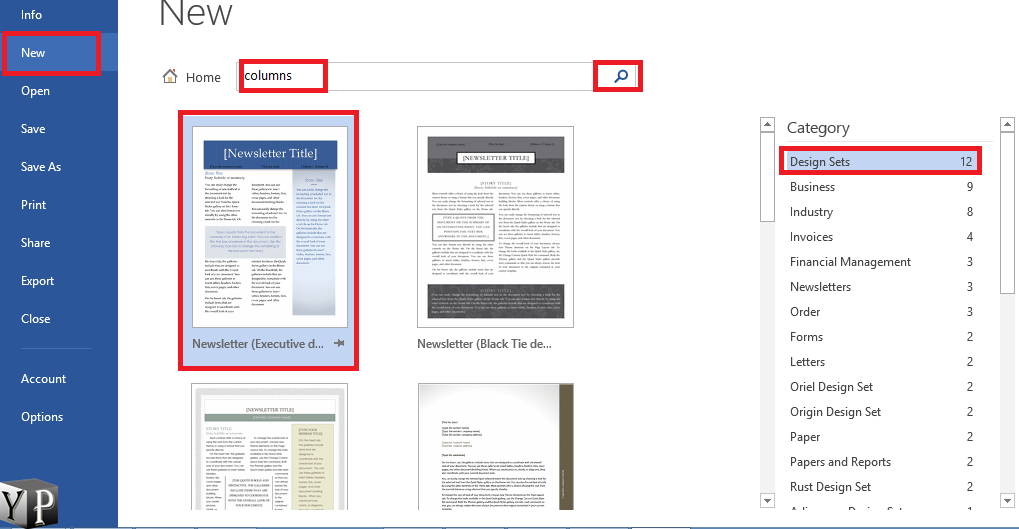
Regardless of the number of columns that are in your document, the column break will move your cursor to the top of the next column and the next. Insert a Column Break in Word 2010. Luckily you can insert a column break into your Word column at any time, which allows you to dictate the point in your document where Word will start a new column.
Select Line between to add a vertical line between the columns.To add a cell, row, and column to a table, first, you need to create a table in a Word document. In this article, we'll take a basic look at Word's numbering feature and then move on to two common problems-indents and alignment-that are easy to solve if you know where to look and how to alter the setting to get the results you want.(Uncheck Equal column width if you want to enter specific widths for individual columns.) C. As is often the case with Office, knowing the right setting to use and where to find it is the key.
It's important to remember that the numbered list settings might not be what you expect because Word applies the last numbering style selected. Follow the below instruction to add a. Note: Cells are the combination of rows and columns. In a Word document, tables are used to organize and present information in a better way.
When the pointer becomes a double-headed arrow.I'm using Word 2016 (desktop) on a Windows 10 64-bit system, but this article applies to earlier versions. To change the width of a column, point to the space between the column headings. The concepts are the same even if your settings don't match mine.Changing column width.
Move Between Columns Word Download The Sample
How to see who is trying to break into your Office 365 and what they're trying to hack Microsoft reveals pricing and other details for Office 2021 For your convenience, you can download the sample demonstration. However, you can't apply either option discussed in this article using the browser.
You can use the Numbering option as a simple toggle as follows: There are two ways to add a numbered list. Microsoft 365: A side-by-side analysisAdding a numbered list is simple, and often you won't need to alter a thing.
Enter your first list item and press Enter to wrap to the next line. And positions the cursor a bit to the right. Click the Numbering option in the Paragraph group.
A numbered list, by its nature implies that the number of items or the order of those items has meaning. One more thought before we move on-use numbered lists correctly. Figure B Generate the numbers after the fact.Creating a numbered list is simple and most users catch on right away. Select the list and click Numbering Word adds sequential numbers, beginning with 1, to the complete list all at once, as shown in Figure B. At this point, you can press Enter once and then click the Numbering option or press Enter twice to disable the numbering feature.Figure A Word adds the sequential numbers to the left of each item for you.You can also generate a numbered list from an existing list. Repeat steps 2 and 3 as many times as needed to complete the list.
That half inch is composed of a Tab character, not spaces. There's a half inch between the number and the first character in the item. Word indents the list a quarter of an inch to the right of the left margin. Remove the word Seven from the title and you have a bulleted list!SEE: 10 all-purpose keyboard shortcuts to boost your Word efficiency (free PDF) (TechRepublic) Line indents and spacingAfter adding a numbered list, you probably notice a few things: You can turn what might otherwise be a bulleted list by forcing a number into the mix, as I've done with our example list.

Figure F Word doesn't align the numbers as expected.Fortunately, the alignment setting is easier to find than indent and spacing settings you'll create a right-aligned number format as follows: We expect numbers to align using the period character or the right-most digit if there's no punctuation. Leaving it as is makes the reader uncomfortable it's simply not as readable as it should be. You could leave the list as is, but most likely you'll want to adjust it. If you choose Nothing from this setting, Word ignores the Text indent setting.SEE: Microsoft Teams: The right collaboration platform for your organization? (free PDF) (TechRepublic) AlignmentAfter adding a few more facts, as shown in Figure F, you might notice something new-the two-digit numbers don't align with the previous one-digit numbers. Figure E The new list is closer to the left margin and there's less space between each number and the item.You could change the Follow number with option ( Figure D) from a Tab character to spaces, but I don't recommend doing so unless you have a specific reason for doing so-and you seldom will.
Stay tunedNumbering basics are easy, but numbered lists can be much more complex. Figure H Word aligns the numbers as expected. Click OK to see the newly aligned list shown in Figure H.Figure G Change the Alignment setting. In the resulting dialog, change the Alignment setting from Left to Right, as shown in Figure G.
Please mention the app and version that you're using. For example, "Please troubleshoot my workbook and fix what's wrong" probably won't get a response, but "Can you tell me why this formula isn't returning the expected results?" might. When contacting me, be as specific as possible. You can send screenshots of your data to help clarify your question. Don't send files unless requested initial requests for help that arrive with attached files will be deleted unread.


 0 kommentar(er)
0 kommentar(er)
